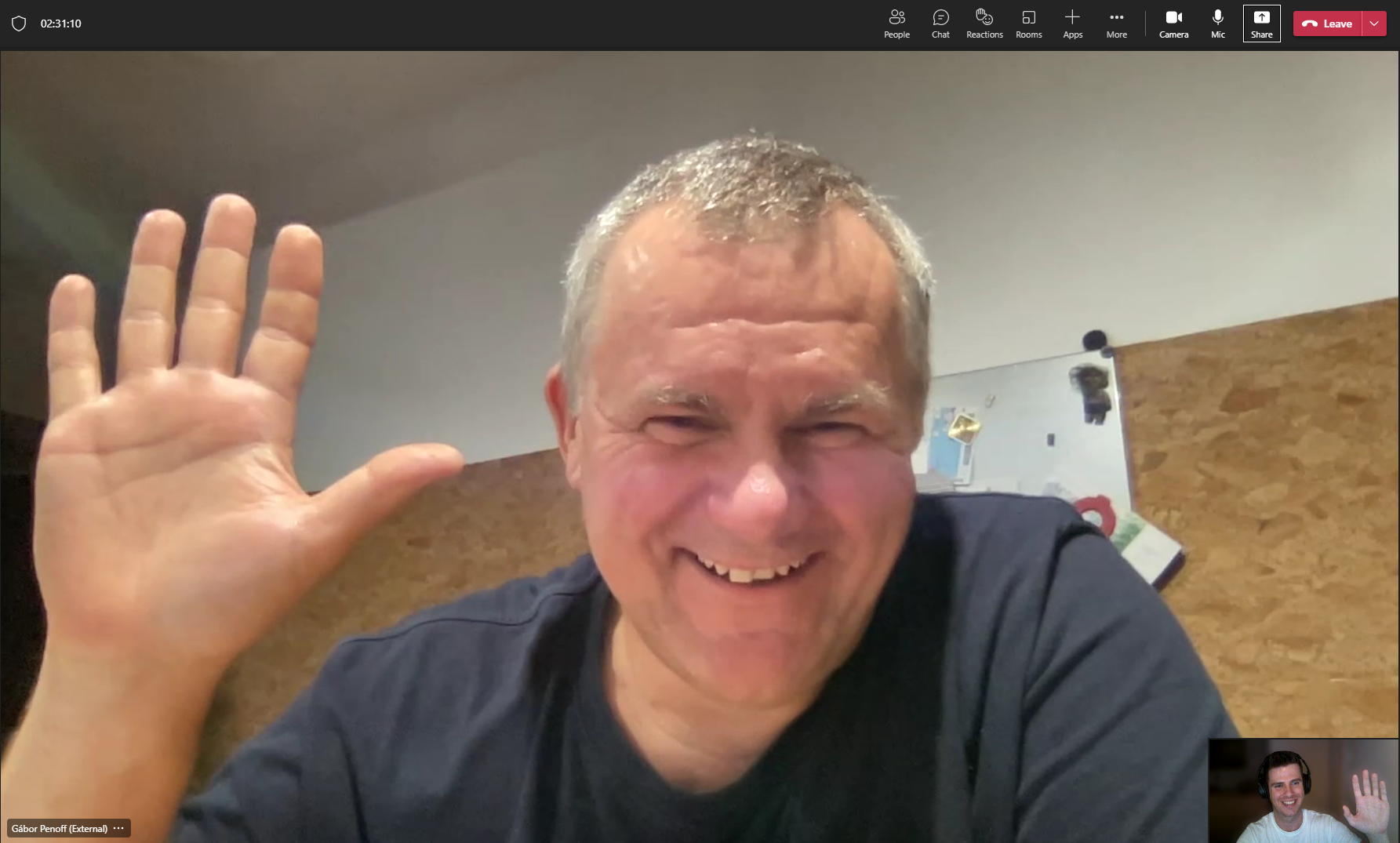Az élet 2020 szeptemberében úgy hozta, hogy elhagytuk Indonéziát és Hollandiába, Rotterdamba költöztünk. A rotterdami lakáskeresésünknek az lett a vége, hogy írtam egy egészen speciális indonéz helloTuriszt guide-ot Indonéziához. Ez biztosan furán hangzik, úgyhogy elmesélem, hogy történt, aztán jöhet a guide.
A holland lakáspiac enyhén szólva pezseg – pár nap alatt elkelnek frissen kiadónak hirdetett ingatlanok – durvább a tempó, mint Sydneyben volt anno. Az egész család a holland ingatlanoldalakat bújta, mikor az egyik fiunk rátalált egy szimpatikus kiadó lakásra. Írtunk az ügynökségnek és leegyeztettük az időpontot amikor meg tudom nézni a lakást.
A megbeszélt időpontban megjelenek az ingatlan előtt és becsöngetek. Egy vékony mosolygós férfi nyit ajtót. Mondom neki, hogy jöttem megnézni a kiadó lakást, mire ő meglepetten azt válaszolja, hogy az ő ingatlanosuk nem szólt nekik egy szót sem. Semmi baj, elnézést kérek, majd jövök máskor. Dehogy, ne pazaroljuk az időt – mondja a tulajdonos -, megmutatja ő a lakást, ha ez nekem nem gond.
Belépünk a lakásba, dobozok mindenhol. Elnézést, holnap jönnek a költöztetők, ezért a rumli – mondja, majd hozzáteszi: megyünk Indonéziába.
Milyen kicsi a világ – mondom én, mi meg pont onnan költözünk ide. Melyik régió a célpont? Jakarta.
Hát ilyen nem sok van az életben – mi Jakartából jövünk. Már mindketten nagyon vigyorgunk, mire még hozzáteszi: a feleségem gyárigazgató és a cége expatriálja Jakartába. Na ilyen feleséget épp én is fel tudok mutatni 🙂
Még rákérdeztem, hogy nézegették-e már Jakartát, illetve esetleg megvan-e a városrész, ahova költöznének. A válasz: Jakarta déli részén van egy Pondok Indah nevű kerület, oda mennek. Akkor esetleg erről is tudnánk mesélni – mi a Pondok Indah Residence apartmanházban éltünk egy évig.
Szóval így alakult, hogy két család nagyjából helyet cserélt a világban. Még aznap este gondoltam egyet és írtam nekik egy “túlélési kézikönyvet” Indonéziához. Csupa olyan dolgot próbáltam egy kupacba tömörítve összeszedni, amivel könnyebbé tesszük az életüket, ha még érkezés előtt tudomást szereznek róla. Voila:
Indonesia guide
I tried to collect some things we learned thru experience. We have had a cultural training but it did not prepare us to these things.
Travel
Before you depart, download these mobile applications:
WhatsApp – de factor standard online communication tool in South East Asia
myTelkomsel – the top up & monitoring application of Telkomsel, the biggest Indonesian mobile provider
Gojek – Uber replacement in South East Asia
Grab – Uber replacement in South East Asia
These are vital. Grab and Gojek are like Uber for the western world – you can order taxi, food – but also private delivery service, cleaning, massage and whatever else can be delivery related 🙂 Grab is bigger (actually they canibalized Uber in South East Asia) and their application is able to cross-translate between English – Bahasa (=“bahasa” means language, this is the word they use for the standard Indonesian language) on the fly.
There is a dedicated parking place and also reservation stand for Grab drivers at Jakarta Airport https://www.jakartaairportonline.com They are trustworthy, and lot cheaper than Bluebird or Silverbird taxis.
Fuel is extremely cheap in Indonesia – around 0.6 EUR/liter. To travel by a Grab or Gojek driver, a 50 km long ride is tops around 200000 Rp ~12 EUR. A 10-20 km ride in the city is between 50k-100k Rp, depending on the traffic and the drivers availability.
Indonesia does not allow to drive with a non-Indonesian driver license. You have to apply for an Indonesian (which is bureaucratic or at least you have to bribe an official to get one) OR you can hire a private driver.
If you will be a part of an accident the responsible person will be the wealthier party – in most cases it will be you. That’s why companies suggesting to employ a driver. If the company provides a driver to you it’s fine – but in case you have to find and employ one than we have something amazing for you!
Before we arrived we read horror stories about unreliable / bad private drivers. We worried a lot, but at the end were so lucky we met with our driver, “Yoga”. His name is Yogo Prasetyo, a 30 year old married guy, father of a 8 year old girl and a 7 months old boy. Yoga is very clean, polite, accurate, happy and absolutely trustworthy human being. We would trust our life. Let me tell you a story about him.
Our boys came to visit us in January and we decided we will fly to Yogyakarta for a weekend. The boarding was scheduled for 6:00, the travel time from our home to the airport was ~an hour so we had to leave the apartment at 4:00. Our car was parked in the basement of the apartment’s garage and Yoga came to work with his motorbike daily. He was there at 4:00 on that day wearing an ironed traditional batik shirt and pants. There was raining since last evening.
Before Yoga arrived I saw a video message from him in which children were biking in 50 cm deep water on the street. On the road to the airport we saw a taxi station with submerged cars and I asked him what’s going on. He said when the rain does not stops after ~10 hours this area is flooded – that was the district where he lives with his family. We were shocked. I asked him why the hell he came for work and how could he manage it. The answer just blew my mind. He said his family is safe because he could move them to the top floor of his house (the wife was 7 months pregnant at that time) but unfortunately his motorbike is completely submerged. So he took his working clothes, packed it in a plastic bag and swimmed through the flooded area to be there at our garage by 4:00 am. He said when the sun goes up he is going to apply for an emergency shelter at the municipality. We gave him extra money immediately and sent them to a local hotel instead.
We trusted him from the beginning and we kept a wallet in the car with some cash for any car related expenses. Yoga managed it perfectly: topped up the motorway tollcard, filled up the fuel – and logged every activity. We introduced a logging system for him. Erika bought a book and we have recorded Yoga’s overtime, as well as the cars mileage before/after fuelling as well as the cash balance. He liked it very much – it was clean and transparent, none of us forget anything due to this log.
Yoga took care of the car constantly: he kept it so clean inside and out that the 1 year old car looked like a brand new salon model when we left the country.
All in all, if you or any of your colleagues would need a professional, trustworthy driver we are more than happy to recommend him. Yoga’s number is: +62 xxx xxxxxxxxx
If you can’t access him just let us know and we will try to help.
Traffic
It seems frightening at the beginning, but believe me, Indonesians are the one of the best drivers around the globe. Accidents are very rare. The families are carrying their babies on their motorbikes and hence they are developing an extremely sensitive balancing & peripheral vision.
Sometimes to cross a road seems impossible – but let me tell you the trick:
- turn your palm to the ground and push it towards the oncoming traffic. They will notice you and will let you to pass
- go slowly and keep your eye on the traffic
I swear, after two weeks or so you will cross the roads like a local! BTW do not try to cross using this method in Vietnam 🙂
Money
First of all: get some cash as you arrive. ATMs are available at the airport but also money changers who accepts EUR.
Banknotes in Indonesia: 2000, 5000, 10000, 20000, 50000, 100000
Also there are 100, 200, 500, 1000 coins . You or the driver can give this coin change to the “pa oga” – the volunteers who guides the traffic in the road crossings 🙂
1 EUR ~= 17500 IDR. Supermarkets and stores in the malls are all accepting major bank cards. You have to have an Indonesian bank card to pay in Indonesian webshops – or you can pay by “top up” e-wallet services.
There is no contactless debit card payment in Indonesia yet – no Pay, no PayPass yet and they just started to introduce Visa’s V-Pay recently. Instead, there are multiple companies offering e-wallet platforms. E-wallet is basically a mobile app. You can top up the e-wallet almost everywhere – with bank transfer, in grocery stores, at ATMs or with cash at every merchant who accepts their e-wallet.
We have used two of them: LinkAja for topping up my prepaid mobile, and OVO for all other payments. Both of them are working properly. Grab – the Uber-like company is also supporting OVO.
Mobile, internet, communication
There are multiple providers available – one of the best network is Telkomsel’s. Prepaid SIM cards are available everywhere. Mobile internet is cheap and reliable.
Telkomsel app
All new prepaid SIM cards are containing some internet usage. To top up Telkomsel SIMs use their app or go to a Telkomsel store.
In Indonesia, everybody is on WhatsApp. This is the must have communication platform there.
Online shopping
For anything the two biggest webshops are:
For groceries:
Shipping costs are unbelievably low: an “instant 3 jam” (=within 3 hours) delivery costs abour 2.5 EUR.
For offline grocery shopping we recommend Ranch Market ( https://www.ranchmarket.co.id ), Hero ( https://www.hero.co.id ) and Foodhall ( https://www.foodhallonline.com/home-delivery/ ) grocery stores. All of them are available for online shopping thru HappyFresh webshop.
Local food
There will be a lot of street food merchants with a trolley called “warteg”. Warteg is the abbreviated name of “warung tegal” (warung means shop, and Tegal was the city where these little food trucks appeared first). You can try anything which was deep fried in oil before or roasted on ember, but for the sake of your health, nothing else!-) Fried tofu and tempe, sate ayam (chicken satay) and sate kambing (goat satay) was our favorite warteg food.
Pecel lele (=fried catfish), nasi goreng (=fried rice with eggs and vegetables), nasi padang (=rice curry) and rendang sapi (=beef rendang) were our favorite dishes.
But my personal absolute favorite is “sale” – the cooked – fried small banana. The best one was always in the box Yoga brought us as a present from his wife. Ask him and I’m sure he will be happy to present it!-)
From fruits, you must try:
- “nanas madu” (=honey pineapple): this is a small but very sweet and very fragrant pineapple. There is a region called Subang – on the way to Tangkuban Perahu volcano – where people are selling these in tents on the streets
- “alpukat” (=avocado): raw or fried, it is awesome. And the taste is not comparable to the ones which are available here in the EU
- “pisang kecil” (=small banana): sweeter and more intense than the standard banana
These are all available on the streets – just ask Yoga to buy and he will bargain a good price 😉
If you are tea lovers, there is a restaurant / teahouse chain called Lewis & Carroll: http://www.lewisandcarrolltea.com They are offering a fantastic tea tasting series served in test tubes which is a must try. Their food is also quite good.
Indonesian food sometimes sweet (when it is sweet then it is very very sweet) and often hot/spicy. Let’s learn these words quickly:
manis = sweet
pedas = spicy
Interestingly, in Asia people usually do not use knives at the table. Their foods are usually prepared pre-chopped to bite-sized pieces so everything is edible just by spoon and fork.
Diarrhea
To prepare yourself, buy a medicine called NIFUDIAR: https://www.tokopedia.com/search?st=product&q=nifudiar This one is the medicine the European need there. This is a yellow sweet suspension and stops the diarrhea quickly.
Disinfectant
In case if you could not find hand sanitizers: they are all based on isopropyl alcohol: https://www.tokopedia.com/snapshot_product?order_id=470807789&dtl_id=707477812
Weather & climate
Jakarta is hot, but not unbearably hot. Every day is the same: daytime = 34 ℃, nighttime = 27 ℃. Either it rains or not (predictions are unreliable). Luckily the colest rain is 25 ℃. There is no such thing as “suffocating humidity” over there.
Dress
For me, this is the best in Indonesia: just grab a short, a t-shirt and a sandal and you are ready. Neither warm clothes, nor socks required during the entire year.
On the other hand, Indonesians love to dress in batik – their traditional clothing. Actually they are wearing batik clothes at least on Fridays. Batik stores are existing in every mall but there is a lot cheaper megastore where the locals are buying their shirts / dresses. It is called Thamrin City, just a minute walk from Grand Indonesia Mall: https://g.page/thamcy?share
Apartments
We lived in Pondok Indah Residences ( https://goo.gl/maps/qZ4nrwWz1JJkbFPH6 ) which is a newly built, very modern, fully equipped apartment complex. When we tried to find our new home there we saw Pakubuwono Residence ( https://goo.gl/maps/yW4vP8Azm6mr8Csz7 ) and Botanica Residence ( https://goo.gl/maps/WB2SZb7Wpr51ZGqWA ). They were similar.
People
Indonesians are very kind, peaceful, friendly people. They will ask you to take a picture together – for themselves. This means them a lot.
They will never give you anything with left hand and it is the sign of respect if you pass something to them by holding it with both hands – they will really appreciate this gesture, especially from western people.
Indonesians don’t like to say “no”. That’s because they believe they will hurt you. Instead, they might hide/run away (literally :)) or lie. Try not to use questions to be decided. It is unusual at the beginning but you will get used to it 😉
Religion
>85% of the population is muslim. There will be mosks everywhere. At first you might fright frustrating the “yelling” of the imams 7 times a day – but trust me, you will get used to it within 2 weeks.
There is no such thing as atheist in Indonesia. If they ask you about your religion and you are atheist just say “catholic” and they will accept it.
Language
Indonesian language is easy – I do encourage you to learn it!
Some useful expressions
Greetings:
- apa kabar? = how are you?
- baik = good
Indonesians are using four greeting terms:
- from midnight to ~11:00: selamat pagi = good morning
- from ~11:00 to ~15:00: selamat siang = good day
- from ~15:00 to sunset: selamat sore = good afternoon
- from sunset to midnight: selamat malam = good evening
To thank something:
- terima kasih (banyak) = thank you (very much)
- sama sama = you are welcome
For shopping:
- berapa ini = how much is this?
- saya ingin membayar = I would like to pay
misc.:
- ya = yes
- tidak = no
- tak = not
- belum = not yet
- saya tidak mengerti = I don’t understand
- Apakah kamu berbicara Ingris? = do you speak English?
Must see
Our favorite spots around Jakarta:
Pulau seribu
On the Java sea, above Jakarta there are ~300 islands on the sea with very nice reefs. You have three options:
- rent an entire island for some time
- spend one or more nights on an island
- go for a daily trip
We have tried the 2nd and 3rd options.
To reach the farthest islands takes a ~1 hour 40 minute long boat ride. We recommend Pulau Pelangi ( https://goo.gl/maps/BZLhQebebcfsiJoM9 ), Pulau Sepa ( https://goo.gl/maps/gCtSh1jdKrkX5WYC7 ) for day trips and Pulau Macan ( https://goo.gl/maps/tGf6Am1Va4KMZpXEA ) for an overnight stay.
We used these guys: https://www.jalanjalanpulauseribu.com/
The boats are departing at 8:00 from here: https://g.page/dermaga-marina-ancol-dki-jakarta?share and departing back at 14:00 every day.
Bogor – Kabun Raya
This is a botanic garden with the presidental residence. https://goo.gl/maps/PzaSPpfhQAJr3AXUA
Bogor – Taman Safari
An open space drive-thru zoo, a must have. https://goo.gl/maps/uW2WJAFG1vbdNAtK9
You will see tons of merchants selling carrots (=wortel in Indonesian) on the way to the zoo. I do encourage you to buy a couple of bunches and feed the animals from the car!
Tea plantations
After Bogor or not far from Kawah Putih there are plenty. https://goo.gl/maps/ZQq9wgFxAKFfw3qj6
Tangkuban Perahu
Active volcano. https://goo.gl/maps/F66enm1cde4LZeAJA
Kawah Putih
Sulfuric crater lake. https://goo.gl/maps/dDebaguUxELHBvc48
Anak Krakatau
The most famous Indonesian volcano. You have to hire a boat to get there.
Sambolo beach
West Java, beaches at the Indian ocean. https://goo.gl/maps/RAsZRHXMheY659Qh7
Curug putri = Princess waterfall
Grand canyon of Java – meshmerizing (take your swimsuits, you will not regret!) https://goo.gl/maps/9h9dtbSMKYFLjaXm6
Waterfalls on Gunung Salak
There are a lot, especially during wet season (October – March) https://goo.gl/maps/HwnD6tFdX86RspCy8
To the cook
Last but not least, to the person who used your kitchen in Rotterdam the most:
This was our favorite Japanese dessert: House Fruiche strawberry dessert with milk 200gr https://www.tokopedia.com/voryshop/house-fruiche-strawberry-dessert-with-milk-200gr It is a lifesaver. Just pour it into 200 ml cold milk, stir 3 times (literally, for 5 seconds!) and boom, the jelly is ready! They are achieving this by using LMA pectin which solidifies on low temperatures when kazein (which is in the milk) and some acid (which is in the fluid in the product) present together.
If you like jellies: the pectin is very cheap in South-East Asia: https://www.tokopedia.com/snapshot_product?order_id=517878248&dtl_id=776828568
Semolina (durum wheat) is usually not available in the supermarkets – but you can buy it on Tokopedia: https://www.tokopedia.com/snapshot_product?order_id=518686597&dtl_id=778025949
Final endulgement
Aloe vera is the highest quality we have ever found anywhere. They have an aloe vera jelly with 98% purity – this one does not stick, has a very pleasant scent and the skin absorbs it quickly and completely. Perfect after sunburns: The Face Shop Jeju Aloe Vera 99% Fresh Soothing Gel Original https://www.tokopedia.com/dakocanid/the-face-shop-jeju-aloe-vera-99-fresh-soothing-gel-original
This one is usually available in the pharmacies as well.















